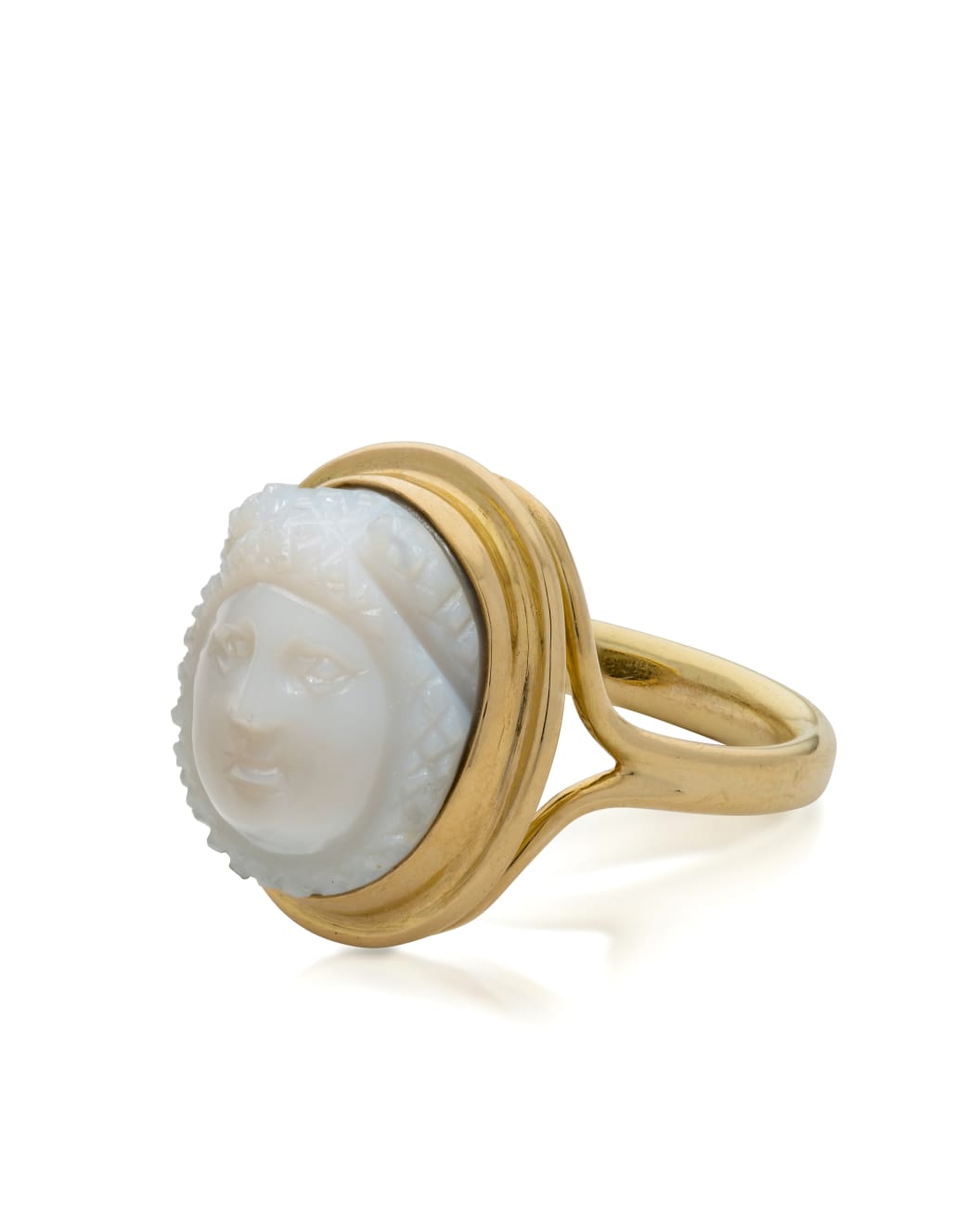Roman
A Roman onyx cameo of the head of Medusa set in a modern gold ring, circa 3rd century AD
Onyx and gold
Ring size: M; length of cameo: 1.5 cm
The oval cameo in two layers of white on blue-grey, carved with the head of Medusa shown turning slightly to one side, with small wings at the head and wavy...
The oval cameo in two layers of white on blue-grey, carved with the head of Medusa shown turning slightly to one side, with small wings at the head and wavy hair, set in a modern custom made 18 carat gold ring
Provenance
German private collection, acquired in the 1960s
Literature
The head of Medusa (Gorgoneion), appears as early as the 8th century BC and is among the most ancient of images in the Classical world. It was employed as an amuletic or apotropaic device, as a fearsome image to ward off evil and was worn by the goddess Athena on her breastplate/aegis, as well as by Zeus.It came to be a central feature of the Roman Imperial cuirass, and large cameos of Medusa were used to ornament phalerae, awarded as a military honour. This cameo would have been worn as a ring or pendant to ward off evil from its wearer. For further discussion of the type and comparanda, cf. M. Henig, H. Molesworth, The Complete Content Cameos, 2018, pp. 183-191.
